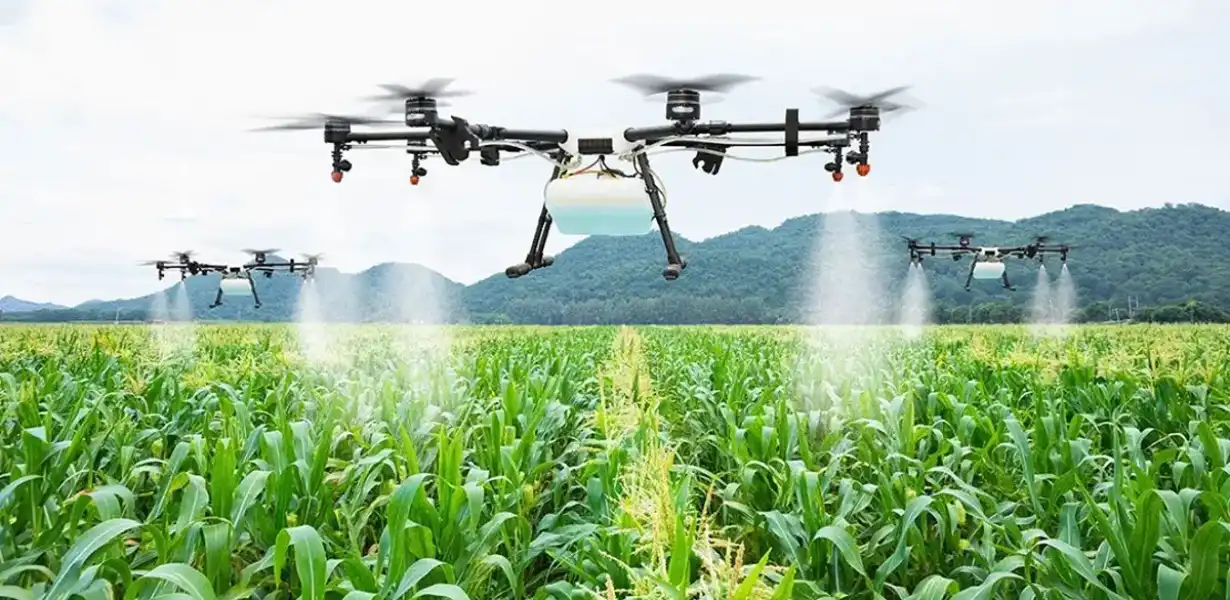
Precision Conservation: How Data Analytics and Drones Revolutionize Wildlife Protection
- Post
- August 8, 2023
- Ad Serving Tech, Case Studies, Real-time Bidding
- 0 Comments
As wildlife faces unprecedented challenges in the modern world, a new era of conservation is being ushered in by the potent combination of data analytics and drone technology. The synergy between these two fields is reshaping the landscape of wildlife protection, providing unprecedented insights and strategies for safeguarding our planet’s biodiversity.
Introduction: A Glimpse into the Future of Wildlife Protection
In an era marked by rapid technological advancements, the preservation of our planet’s diverse ecosystems and the protection of its precious wildlife demand innovative approaches. This is where the convergence of data analytics and drone technology comes into play, offering a fresh perspective on conservation efforts. The real-time collection of data, combined with the agility and versatility of drones, is setting the stage for a paradigm shift in precision conservation.
The Role of Data Analytics in Wildlife Protection
Unlocking Insights from Vast Data Streams
Data analytics serves as the backbone of precision conservation efforts. With the ability to process vast amounts of data from diverse sources, including satellite imagery, camera traps, and environmental sensors, we can extract valuable insights that were once hidden in the vastness of information. Through advanced algorithms and machine learning, patterns emerge, helping us understand animal behavior, migration routes, and habitat preferences.
Real-time Monitoring and Early Warning Systems
One of the remarkable aspects of data analytics in wildlife protection is the establishment of real-time monitoring systems. By integrating data streams from various sources, we can create early warning systems that detect sudden changes in ecosystems. For instance, sudden shifts in temperature or the appearance of pollutants can trigger alerts, enabling swift response and mitigation.
Empowering Conservation with Drone Technology
Eyes in the Skies: A New Perspective on Wildlife
Drones, often associated with aerial photography, have evolved into powerful tools for wildlife protection. Equipped with high-resolution cameras and even thermal imaging technology, drones provide a bird’s-eye view of habitats and animal populations. This vantage point offers researchers and conservationists the ability to conduct non-intrusive observations, track animal movements, and identify potential threats.
Efficient Surveying and Tracking
Traditional methods of tracking wildlife often involve labor-intensive fieldwork. Drones, on the other hand, cover vast areas in a fraction of the time, making wildlife surveys more efficient and accurate. By utilizing drone technology, researchers can gather data on animal populations, assess habitat health, and monitor changes over time. This streamlined approach is especially crucial in remote or challenging terrains.
Case Studies: Real-world Applications
Protecting Endangered Species through Precision Conservation
One striking example of the impact of data analytics and drones is the conservation of endangered species. Through the meticulous analysis of data, conservationists have identified critical habitats and migration corridors. Drones have been employed to monitor these areas, deterring poaching activities and providing essential information for protective measures.
Adaptive Management and Conservation Strategies
In the realm of conservation, adaptive management involves refining strategies based on real-time data. Data analytics enable conservationists to make informed decisions, while drones contribute to the implementation of these strategies. For instance, in fire-prone regions, drones equipped with sensors can detect early signs of wildfires, allowing for timely intervention to safeguard ecosystems and wildlife.
Commonly Asked Questions
1. How does data analytics contribute to wildlife protection?
Data analytics processes and analyzes vast amounts of data from diverse sources, helping researchers uncover patterns, trends, and insights related to animal behavior, habitat health, and threats.
2. What role do drones play in precision conservation?
Drones provide a versatile platform for observing wildlife, tracking animal movements, and surveying habitats. They enable efficient data collection in remote or challenging areas, contributing to better-informed conservation strategies.
3. How are endangered species benefiting from these technologies?
Endangered species benefit from precision conservation through enhanced protection of critical habitats, deterring illegal activities, and facilitating adaptive management strategies.
4. Can drones help prevent natural disasters’ impact on wildlife?
Yes, drones equipped with sensors can monitor environmental conditions, allowing for early detection of events like wildfires. This enables timely intervention to minimize the impact on ecosystems and wildlife.
5. How can individuals contribute to precision conservation efforts?
Individuals can support precision conservation by raising awareness, supporting conservation organizations, and advocating for responsible technology use in wildlife protection.
Final Words
In the ever-evolving landscape of wildlife protection, the fusion of data analytics and drone technology is emerging as a game-changer. The ability to gather real-time insights, monitor habitats, and respond swiftly to threats is reshaping how we safeguard our planet’s biodiversity. By harnessing the power of these technological advancements, we embark on a journey towards a harmonious coexistence between humans and wildlife, ensuring a vibrant and sustainable future for all.




